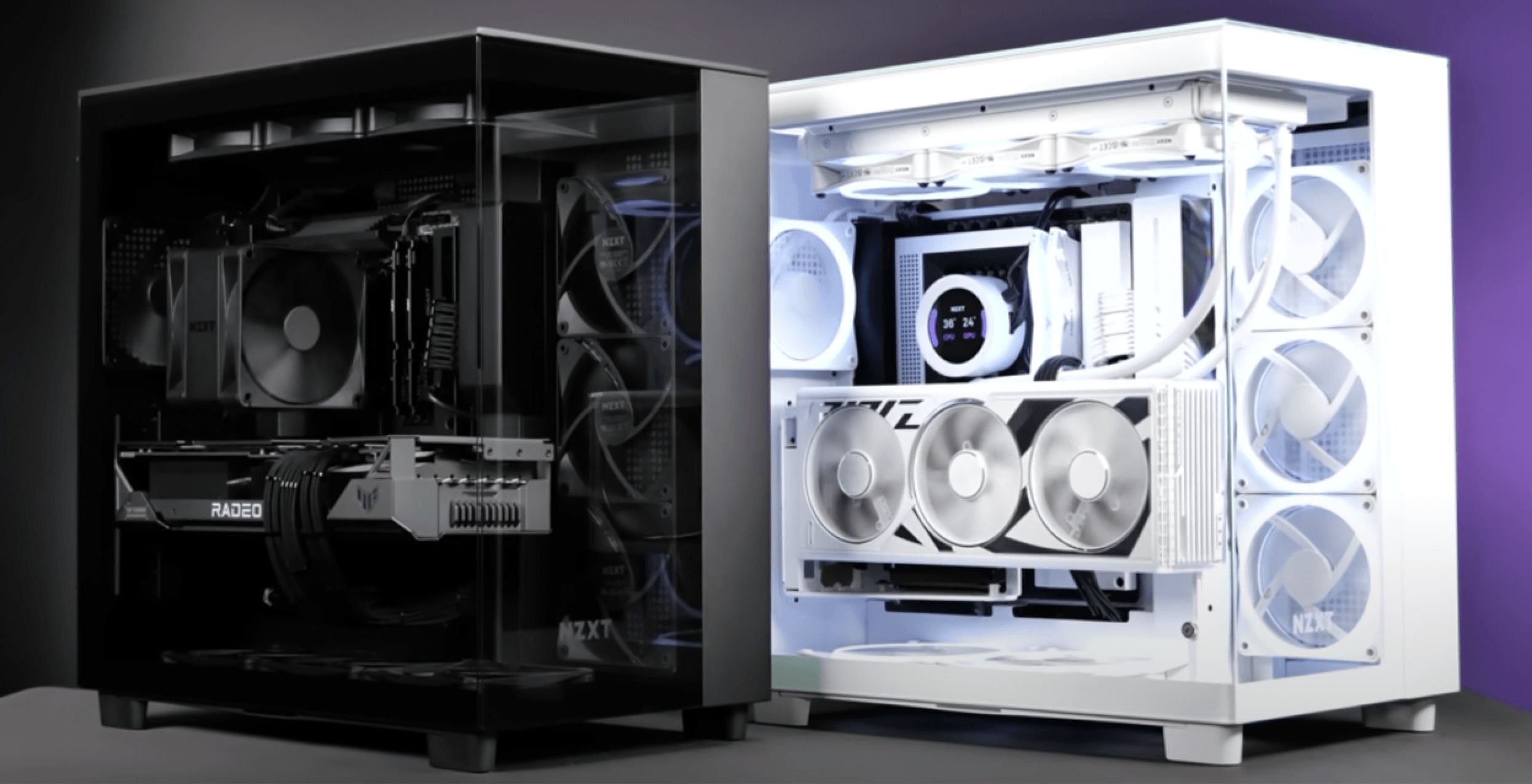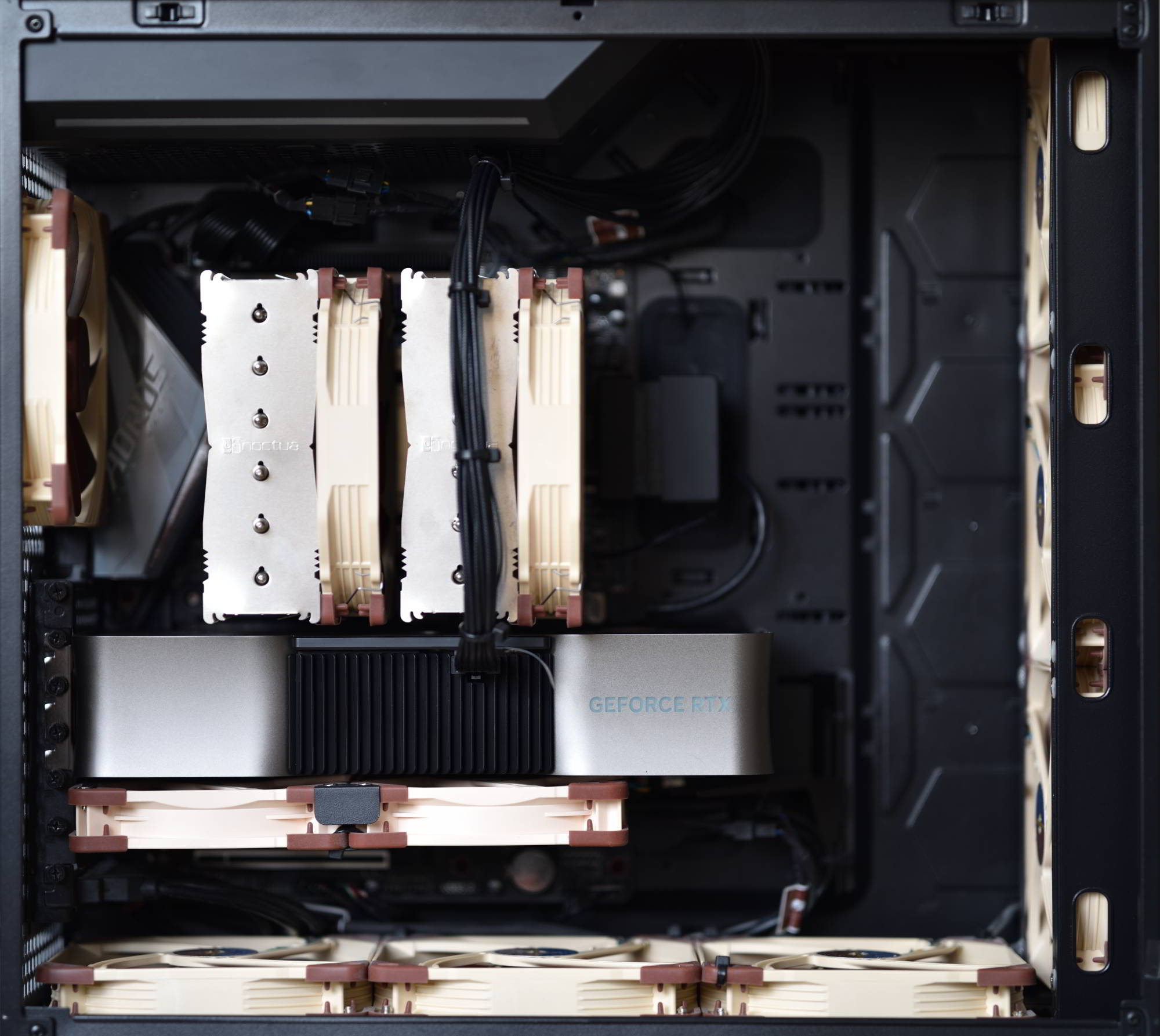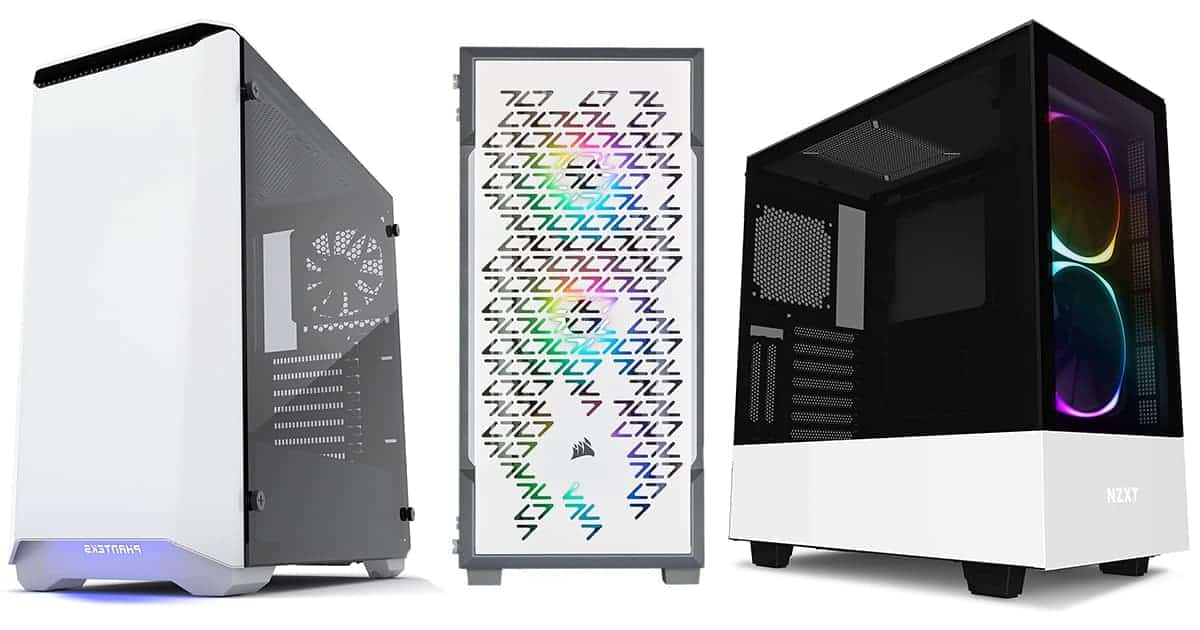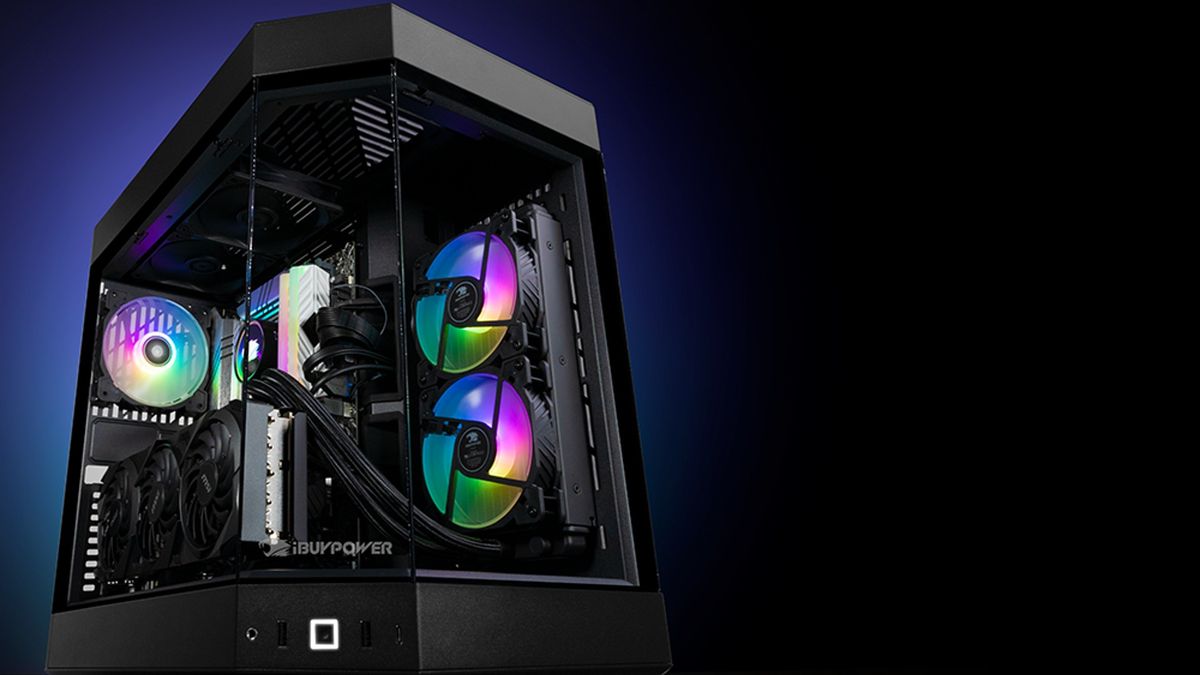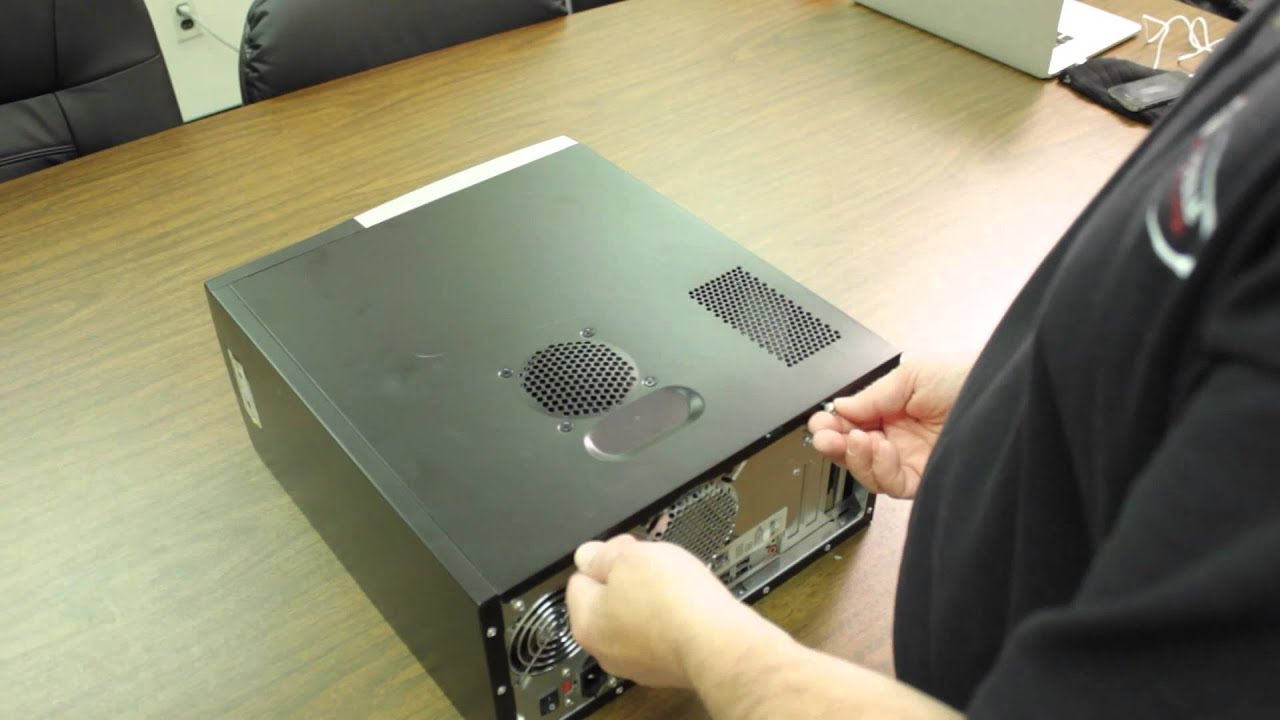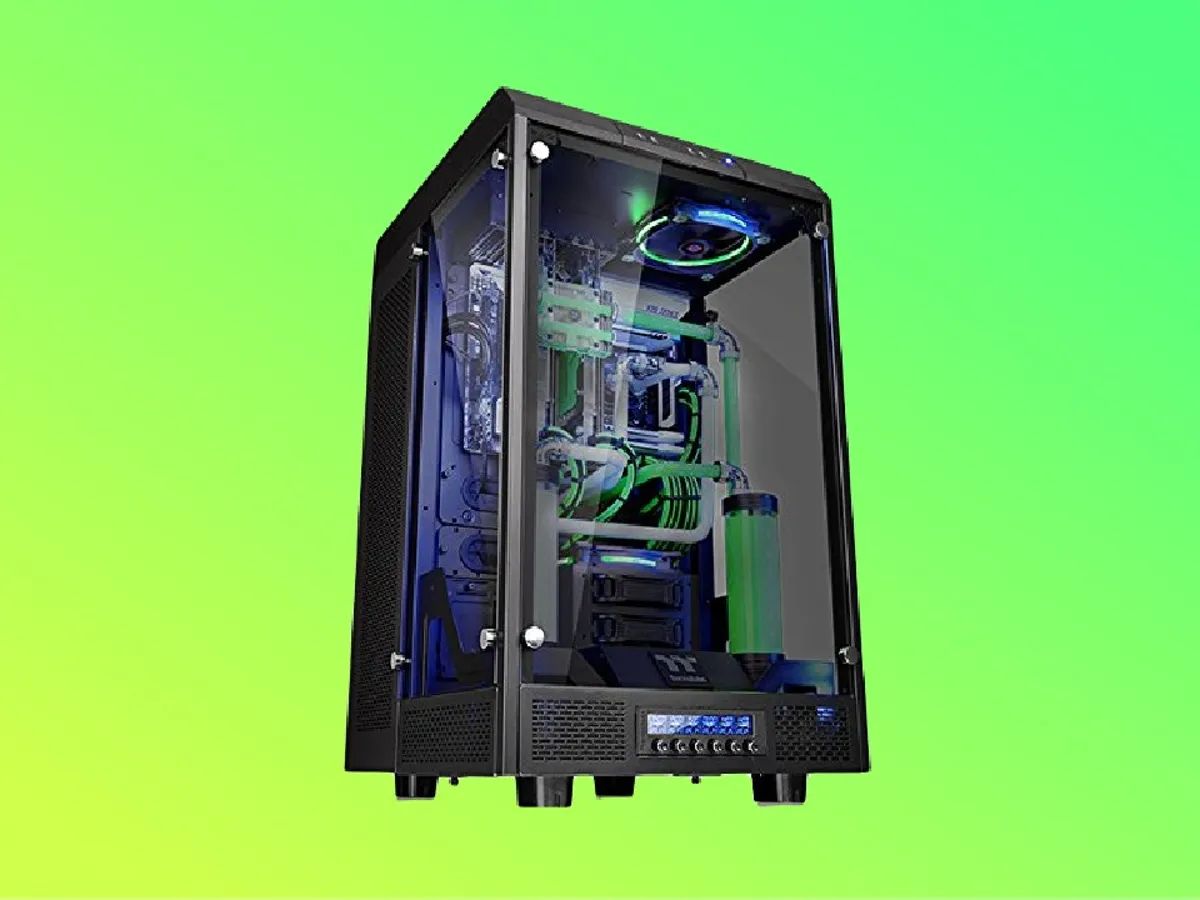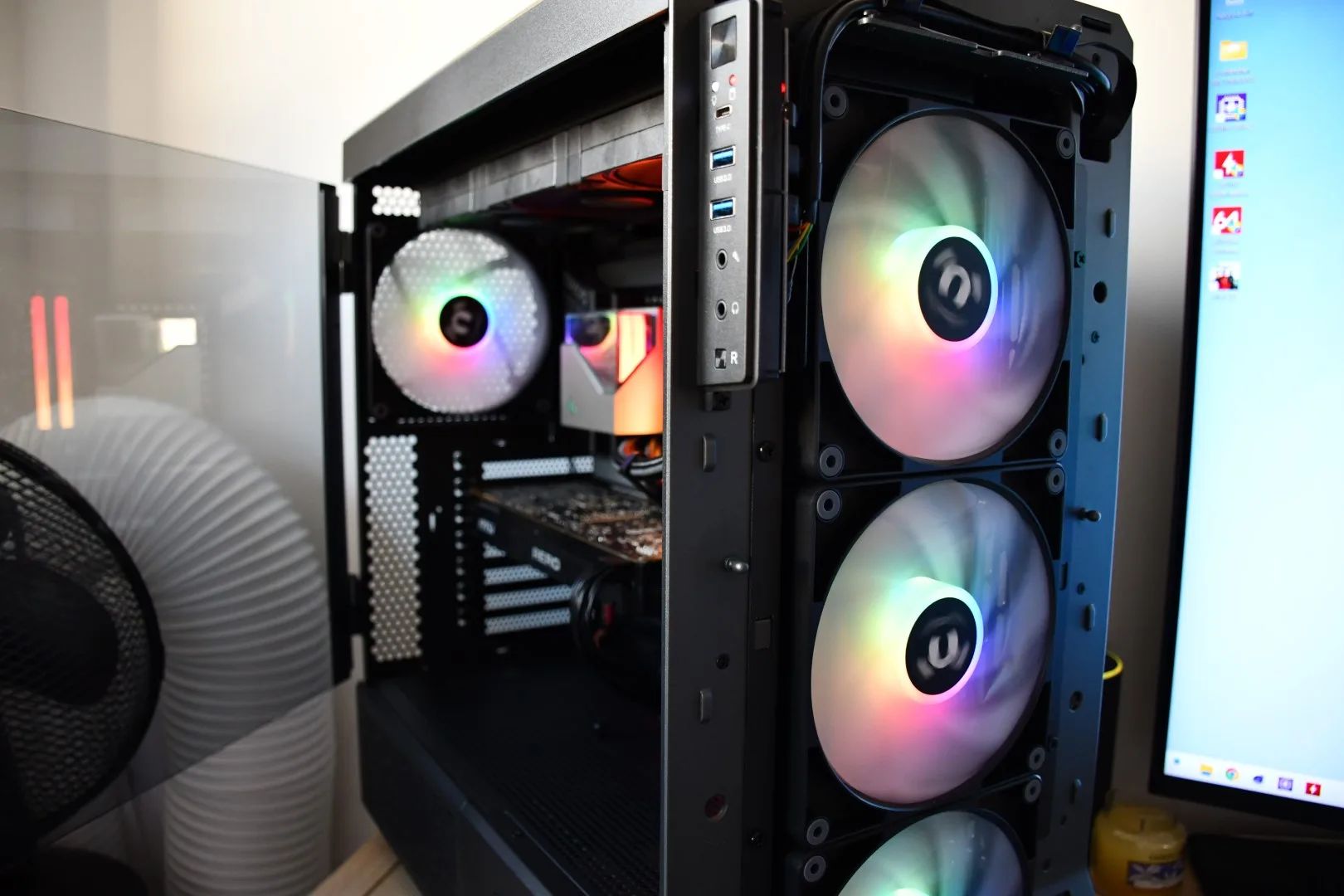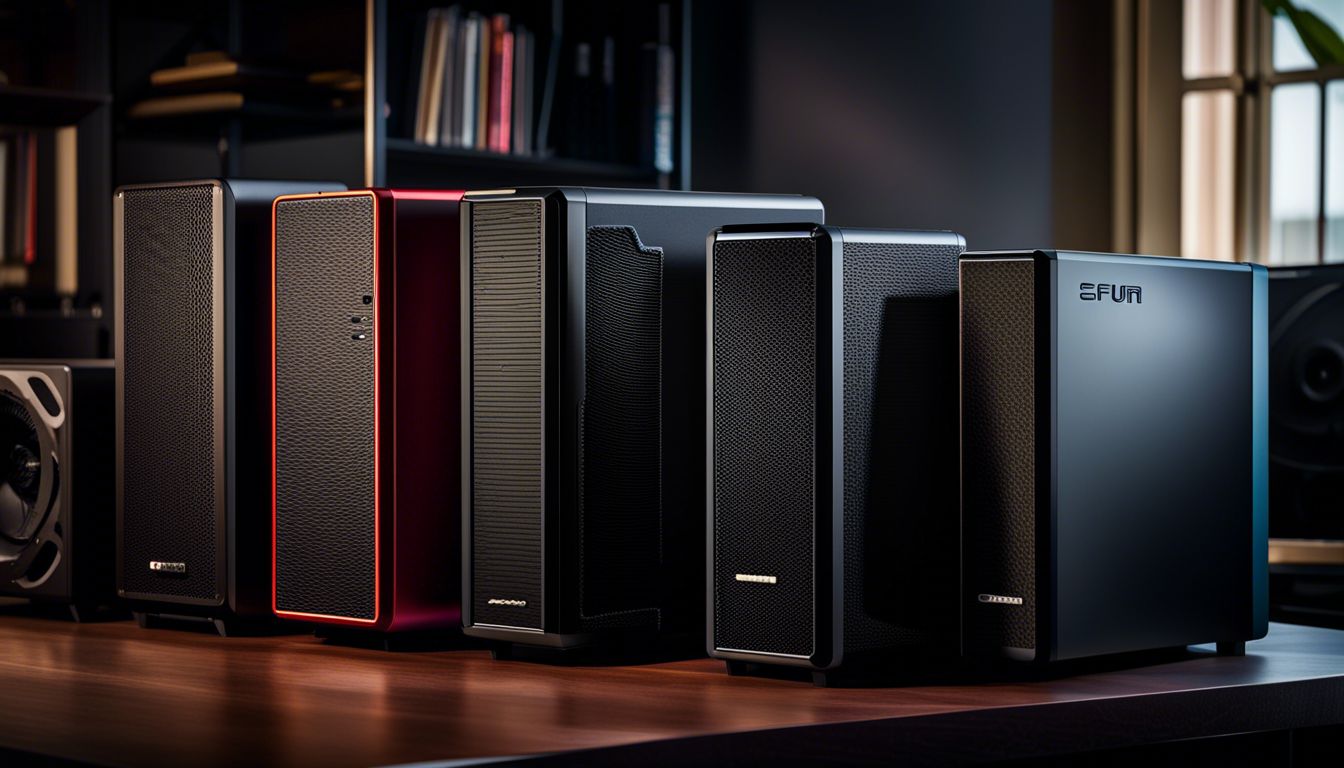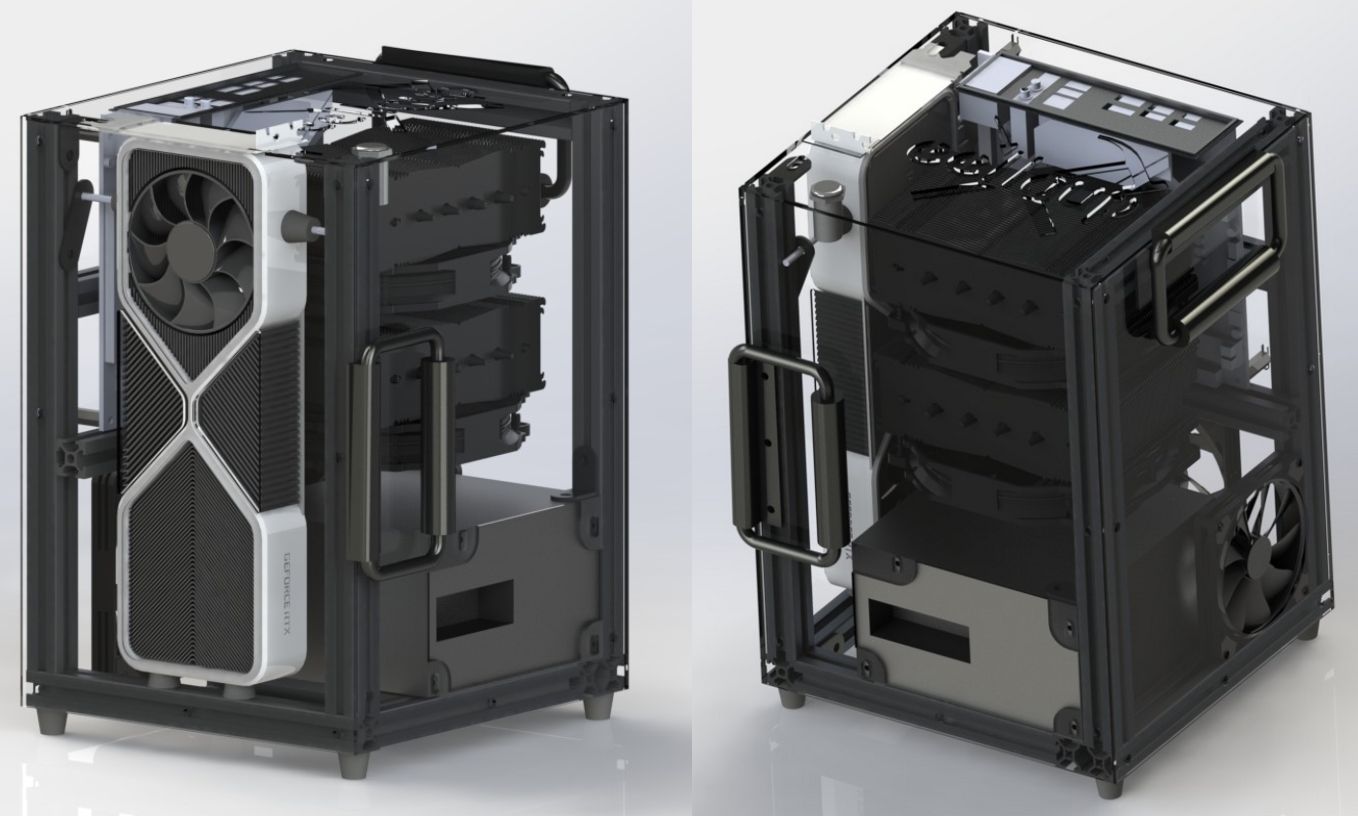Introduction
When it comes to identifying the model of your PC case, it can often feel like searching for a needle in a haystack. With countless manufacturers, brands, and models available in the market, finding the exact model can be a daunting task.
However, by paying attention to certain details and characteristics, you can decipher the model of your PC case with relative ease. This article will guide you through the process of identifying the model of your PC case, helping you to understand its unique features, physical dimensions, internal components, and connectivity options.
Having this information can be beneficial for various reasons. It can help you determine whether an upgrade is possible, whether specific components are compatible, or simply to have a better understanding of the capabilities and limitations of your current case.
So, if you’re ready to unravel the mystery of your PC case model, let’s delve into the different methods and techniques that will assist you in pinpointing the exact model of your PC case.
Identifying PC Case Models
When it comes to identifying the model of your PC case, there are several methods you can employ. By combining different approaches, you can increase your chances of successfully identifying the exact model. Let’s explore the various techniques:
- Look for Branding and Logo: One of the simplest ways to identify the model of your PC case is to check for any branding or logo on the case itself. Many manufacturers prominently display their logo or product name on the front, side, or top of the case. Look for any visible labels, engravings, or markings that can provide clues about the model.
- Check the Manufacturer’s Website: Visit the website of the PC case manufacturer and search for their product lineup. Most manufacturers list their current and past product models on their website along with detailed specifications and images. Compare the design and features of your PC case with the information provided to narrow down the potential models.
- Check the User Manual or Packaging: If you still have the original packaging or user manual that came with your PC case, it can be a valuable resource for identifying the model. The user manual usually mentions the model name and provides specific details about the case. Similarly, the packaging may have photos or graphics depicting the model or listing its specifications.
By utilizing these techniques, you can increase your chances of identifying the model of your PC case accurately. Remember that it’s essential to consider multiple factors and cross-reference the information you find to ensure precision.
Look for Branding and Logo
One of the simplest and most straightforward methods to identify the model of your PC case is to look for any branding or logo on the case itself. Many manufacturers prominently display their logo or product name on the front, side, or top of the case, making it an easy identifier.
Start by examining the exterior of your PC case carefully. Look for any visible labels, engravings, or markings that can provide clues about the model. Manufacturers often include their branding elements in a conspicuous manner to promote their products.
Take note of any words or symbols that you find. They could be the manufacturer’s name, a specific product line, or the model number itself. Some logos may be more recognizable, while others may require a bit of research to identify.
Once you have gathered the information from the branding and logo, conduct a search online using the identified name or model number. Check the manufacturer’s website, forums, or tech communities where discussions regarding PC cases are prevalent.
Comparing the appearance and features of your PC case with the information you find online can help narrow down the potential models. Pay attention to details such as design elements, colors, and unique features that match what you have. This can provide vital clues in identifying the specific model you have.
If you are having trouble identifying the branding or logo on your PC case, try using a magnifying glass or a smartphone camera to capture clear images. These close-up images can be helpful in conducting more focused online searches and discussions.
Remember that while the branding and logo provide valuable clues, they may not always give you the full model name or number. In such cases, you may need to combine this method with other techniques to successfully identify the model of your PC case.
Check the Manufacturer’s Website
When attempting to identify the model of your PC case, one of the most reliable sources of information is the manufacturer’s website. Most reputable PC case manufacturers maintain comprehensive websites that provide details about their product lineup, including specifications, images, and documentation.
Start by identifying the manufacturer of your PC case. This information can usually be found on the branding or logo discussed earlier. Once you have the manufacturer’s name, visit their website and navigate to the section that lists their PC case models.
Manufacturers often display their product lineup in an organized manner, allowing you to browse through different models or search for specific ones. Look for categories or filters that help you narrow down your search based on the features or characteristics of your PC case.
When viewing the product listings, pay attention to the product names, images, and specifications provided. Compare these details with your PC case to find matches or similarities. Look for distinct design elements, color schemes, or features that align with what you have.
In some cases, manufacturers may also include archived or discontinued models on their website. It’s worth checking these sections as well, especially if you have an older PC case or acquired a second-hand one.
If you are unable to find the specific model on the manufacturer’s website, consider reaching out to their customer support or technical support team. Provide them with detailed information, such as the physical appearance, dimensions, and any other distinguishing features of your PC case. They may be able to assist you in identifying the model based on this information.
Remember that the information found on the manufacturer’s website can be the most reliable and accurate source when identifying your PC case model. However, it’s always good practice to cross-reference the information with other methods and sources to ensure accuracy.
Check the User Manual or Packaging
If you’re trying to identify the model of your PC case, checking the user manual or packaging can be a valuable resource. The user manual usually contains detailed information about the case, including the model name, specifications, and even helpful diagrams.
If you have the original packaging or user manual that came with your PC case, locate it and take a good look through the contents. The model name or number of the case is often mentioned prominently on the packaging or on the front page of the manual.
Inspect the packaging for any labels or stickers that provide model information. Manufacturers often print the model name or number on the box, making it easier for consumers to identify the specific product they have purchased.
Similarly, the user manual is another valuable resource for identifying the model of your PC case. Flip through the pages and look for a section that provides details about the case itself. This section may include specifications, installation instructions, and even diagrams showing the different components.
If you don’t have the physical copy of the user manual or packaging, don’t worry. Many manufacturers provide digital versions of their user manuals on their websites. Visit the manufacturer’s website and search for the support or downloads section. Look for the user manual specific to your PC case model and download it for reference.
If you’re having trouble identifying the model information in the user manual or packaging, pay attention to any illustrations or diagrams that depict the physical appearance of the case. Compare these visuals with your PC case, noting any unique design features or distinguishing characteristics that can help in narrowing down the model.
Remember that the user manual or packaging can provide accurate and official information about your PC case model. However, in some cases, user manuals may cover multiple models, so it’s important to carefully cross-reference the provided information with other identification methods to ensure accuracy.
Identifying Physical Characteristics
Another approach to identifying the model of your PC case is by examining its physical characteristics. By assessing its size, shape, and design features, you can narrow down the potential models and further validate your findings. Here are some methods to consider:
- Measure the Dimensions of the Case: Grab a measuring tape and carefully measure the dimensions of your PC case. Record the height, width, and depth of the case. Comparing these measurements with specifications provided by the manufacturer or found online can help identify the model.
- Look for Unique Design Features: Pay close attention to any unique design elements present on your PC case. This could include the shape and layout of the front panel, the positioning of the I/O ports, or any distinctive patterns or curves in the case design. Conduct an online search using these design features as keywords to find matching models.
These physical characteristics, when combined with other identification methods, can significantly narrow down the potential models. Remember to cross-reference your findings with information obtained from the manufacturer’s website, forums, or other trusted sources to ensure accuracy.
Measure the Dimensions of the Case
One effective way to identify the model of your PC case is by measuring its dimensions. By accurately measuring the height, width, and depth of the case, you can gather valuable information that can assist in narrowing down the potential models.
To measure the dimensions of your PC case, you will need a measuring tape or ruler. Start by measuring the height of the case from the bottom to the highest point. Next, measure the width across the widest section of the case. Finally, measure the depth from the front to the back of the case.
Record these measurements in either metric (centimeters or millimeters) or imperial (inches) units, depending on your preference. Keeping the measurements precise will enhance the accuracy of your search.
Once you have the measurements, compare them with the specifications provided by the manufacturer or available online. Check the dimensions of different PC case models and look for matches or close resemblances to the measurements you have taken.
When comparing dimensions, consider both the external dimensions of the case as well as any internal compartments or spaces that may affect the overall size. Pay attention to specific areas such as drive bays, which may have their own size requirements.
Remember that some PC cases may come in different versions or sizes within the same product line. Ensure that you are comparing the dimensions with the correct version or size to obtain accurate results.
Measuring the dimensions of your PC case can provide valuable information in identifying its model. However, it is important to cross-reference this information with other identification methods, such as the manufacturer’s website or physical characteristics, to ensure accuracy in the final determination.
Look for Unique Design Features
Examining the unique design features of your PC case can be a helpful method in identifying its model. Each PC case model typically has distinct design elements that set it apart from others. By paying attention to these features, you can narrow down the potential models and increase the accuracy of your identification.
Start by carefully observing the exterior of your PC case. Look for any unique design elements that catch your eye. This could include the shape and layout of the front panel, the placement and style of the I/O ports, or any specific patterns or curves in the case design.
Take note of any striking or distinguishable visual features, such as a specific type of ventilation or a unique fan placement. These details can provide valuable clues in identifying the model of your PC case.
Once you have identified the unique design features, conduct an online search using these details as keywords. Look for images or descriptions that match the design elements you have observed. These searches can often lead you to forums, reviews, or product listings where users discuss specific PC case models.
For example, if your PC case has a distinctive front panel with a honeycomb pattern and a single accent color, search for terms like “PC case with honeycomb front panel and accent color” or “PC case design with unique front panel pattern. These search queries can help you find matching models or product names.
In addition to online searches, consider reaching out to PC enthusiast communities or forums. Post detailed descriptions or images of the unique design features of your PC case and ask for help in identifying the model. These communities often have experienced users who are knowledgeable about various PC case models and can offer valuable insights.
Remember that the unique design features of your PC case, when combined with other identification techniques, can greatly assist in narrowing down the potential models. However, it’s important to cross-reference your findings with information obtained from the manufacturer’s website or other trusted sources to ensure accuracy in identifying the correct model.
Identifying Internal Characteristics
When trying to identify the model of your PC case, it is important to consider its internal characteristics. These internal features can provide valuable information about the case’s compatibility, storage options, cooling capabilities, and more. By examining these factors, you can narrow down the potential models and strengthen your identification process. Here are some key aspects to consider:
- Check the Number of Drive Bays: One of the primary internal characteristics to consider is the number and type of drive bays available in your PC case. Drive bays are slots or compartments where you can install hard drives or solid-state drives. Count the number of drive bays and consider any additional features such as tool-less installation or hot-swappable options.
- Determine the Motherboard Compatibility: The compatibility of your PC case with different motherboard sizes is crucial. Common motherboard form factors include ATX, Micro-ATX, and Mini-ITX. Check the size and mounting holes on the case to determine its compatibility with specific motherboard sizes.
- Look for Expansion Slots: Expansion slots are used to install additional components such as graphics cards or sound cards. Check the rear panel of your PC case to count the number of available expansion slots. Additionally, consider the type of slots available, such as PCI Express or traditional PCI slots.
- Consider Cooling Options: Cooling is a significant aspect of any PC case. Look for the presence of fan mounts, their sizes (120mm, 140mm, etc.), and the number of fans pre-installed or supported. Some cases may also have additional options for liquid cooling solutions.
By examining these internal characteristics, you can gather important information about your PC case and narrow down the potential models. Remember to cross-reference your findings with information from the manufacturer’s website, product documentation, and user reviews to ensure accuracy in identifying the correct model.
Check the Number of Drive Bays
One important internal characteristic to consider when identifying your PC case model is the number of drive bays it offers. Drive bays are the slots or compartments within the case where you can install hard drives or solid-state drives (SSDs).
Start by examining the interior of your PC case. Look for slots or brackets designed to hold storage devices. The drive bays are typically located towards the front or bottom of the case, and they may be divided into different sizes or types.
Count the number of available drive bays in your case. Take note of the different sizes and specifications they support. Some drive bays may be specifically designed for 2.5-inch SSDs, while others may accommodate larger 3.5-inch hard drives.
Consider the type of drive bay design as well. Some cases may feature tool-less installation mechanisms, allowing you to easily insert or remove drives without the need for screws. Others may require traditional screw-mounting.
Once you have gathered this information, cross-reference it with the manufacturer’s website or documentation to find matching models. Check the specifications and product descriptions of different cases to ensure compatibility with the number and size of drive bays in your PC case.
It’s important to keep in mind that the number of drive bays may vary widely between different PC case models. Some compact cases may have limited drive bay options, while larger towers can accommodate multiple drives for storage expansion.
Considering the number of drive bays in your PC case can provide valuable information about its storage capabilities and potential for future upgrades. This knowledge can be particularly useful if you are planning to add additional hard drives or SSDs to your system.
Remember to double-check your findings with other identification methods, such as checking the manufacturer’s website or examining physical characteristics, to ensure accuracy in determining the model of your PC case.
Determine the Motherboard Compatibility
Another crucial factor to consider when identifying your PC case model is its compatibility with different motherboard sizes. The motherboard is the main circuit board that houses essential components such as the CPU, RAM, and expansion slots.
Start by examining the interior of your PC case. Look for the mounting holes and standoff locations where the motherboard is installed. These mounting points are typically in a standard pattern to accommodate specific motherboard form factors.
Common motherboard form factors include ATX, Micro-ATX, and Mini-ITX, among others. ATX is the standard and most widely used form factor, while Micro-ATX and Mini-ITX offer smaller sizes for compact builds.
Determine the compatibility of your PC case by checking the available space and mounting holes for the motherboard. Compare them with the specifications of different motherboard form factors to identify the suitable matches.
Pay attention to the specific dimensions and layout required for each form factor. The motherboard should align with the mounting holes and ports on the back IO panel of the case.
Keep in mind that some PC cases may support multiple motherboard form factors, allowing for greater flexibility in terms of compatible motherboards. Others may be designed specifically for a particular form factor.
To confirm your findings, cross-reference the information with the manufacturer’s website or product documentation. Look for specifications or compatibility lists that mention the compatible motherboard form factors for your PC case model.
Determining the motherboard compatibility of your PC case is essential for ensuring a proper fit and optimal functionality of your components. It allows you to choose the appropriate motherboard size that meets your requirements and is compatible with the other components in your system.
By considering the motherboard compatibility in conjunction with other identification methods, such as checking physical characteristics or exploring internal features, you can narrow down the potential models and accurately identify the model of your PC case.
Look for Expansion Slots
When trying to identify the model of your PC case, it is important to examine the available expansion slots. Expansion slots are used to install additional components such as graphics cards, sound cards, and network adapters. By inspecting these slots, you can gather valuable information to narrow down the potential models.
Begin by opening up your PC case and looking at the rear panel. You will typically see a series of horizontal slots that are designed to accommodate expansion cards. Count the number of slots available in total.
Take note of the specific type of expansion slots present, which are usually PCI Express (PCIe) or traditional PCI slots. PCIe is the most common type used in modern motherboards, while PCI is less common but still found in some older systems.
Consider the length and spacing of the slots as well. Some cases may have longer slots to accommodate larger graphics cards, while others may have smaller or specialized slots for niche expansion cards.
Utilize this information to cross-reference with the manufacturer’s website or documentation. Check the specifications and product descriptions of different PC case models to find matches with the number and type of expansion slots in your case.
It is important to note that the number and type of expansion slots can vary significantly between different PC case models. Higher-end or gaming-oriented cases often offer more expansion slots for increased customization options.
While counting the number of expansion slots, also consider the available space for the installation of larger graphics cards. Some cases may have restrictions on the maximum length or width of graphics cards that can be accommodated.
By evaluating the available expansion slots, you can gain insight into the upgrade potential and the compatibility of your PC case with various expansion cards. This knowledge can be particularly valuable if you plan on adding or upgrading components in your system.
Remember to corroborate your findings with other identification methods, such as checking the manufacturer’s website or exploring physical characteristics, to ensure the accuracy of your identification.
Consider Cooling Options
When identifying the model of your PC case, it is crucial to consider the cooling options it provides. Proper cooling is vital for maintaining optimal performance and preventing overheating of components. By examining the cooling features, you can gather valuable information to narrow down the potential models and make an accurate identification.
Start by inspecting your PC case and look for the presence of fan mounts. Most cases have designated spots where fans can be installed to circulate air and dissipate heat. Count the number of fan mounts available, taking note of their size and location.
Consider the size of the fan mounts, typically measured in millimeters, such as 120mm or 140mm. Larger fans tend to provide better airflow, while smaller fans can fit into tighter spaces. Some cases may also support specialized fans, such as 200mm or 230mm sizes.
You should also look for any pre-installed fans in your PC case. Note their location and size, as this can be crucial information when comparing with different models.
Depending on your requirements, also take into account the potential for liquid cooling solutions. Some cases may have dedicated spots for installing liquid cooling radiators or reservoirs, which can enhance cooling performance.
Once you have gathered information about the cooling options, cross-reference it with the manufacturer’s website or product documentation. Check the specifications and product descriptions of different PC case models to find matches with the available cooling features in your case.
It’s important to remember that cooling options can vary significantly between different PC case models. Some cases may focus on providing excellent airflow with numerous fan mounts, whereas others may prioritize aesthetics and have limited cooling options.
By evaluating the cooling options in your PC case, you can ensure efficient heat dissipation and maintain the longevity of your components. This knowledge can help you choose appropriate cooling solutions and customize your system’s cooling setup.
Remember to cross-reference your findings with other identification methods, such as checking the manufacturer’s website or examining physical characteristics, to ensure the accuracy of your identification.
Identifying Connectivity Options
When identifying the model of your PC case, it is essential to consider the connectivity options it offers. Connectivity plays a crucial role in integrating your peripherals and devices seamlessly with your system. By examining the different connectivity options, you can gather valuable information to narrow down the potential models and make an accurate identification.
Start by looking at the front panel of your PC case. Check for the presence and number of USB ports. USB (Universal Serial Bus) ports are essential for connecting devices such as keyboards, mice, external storage, and more. Count the number of USB ports available and take note of the USB version (e.g., USB 2.0, USB 3.0, USB-C).
In addition to USB ports, also examine the front panel for audio and microphone ports. These ports allow you to connect headphones, speakers, and microphones directly to the front of your PC case for convenient access. Take note of the types of audio ports available (e.g., headphone jack, microphone jack, combined audio/microphone jack).
Look for additional connectivity options on the front or top panel of your PC case. This may include ports such as HDMI, DisplayPort, Ethernet, or SD card readers. These additional ports provide versatility and ease of connectivity for various devices and peripherals.
If your PC case has a transparent side panel, you can also inspect the rear panel to identify additional connectivity options. Look for ports such as USB, audio, Ethernet, and video ports on the back of the case. These ports are typically located directly on the motherboard or connected through an I/O shield.
Once you have gathered information about the connectivity options, cross-reference it with the manufacturer’s website or product documentation. Check the specifications and product descriptions of different PC case models to find matches with the available connectivity features in your case.
It’s important to keep in mind that the number and types of connectivity options can vary significantly between different PC case models. Some cases may offer a wide range of ports for extensive connectivity, while others may have a more streamlined selection of ports.
By considering the connectivity options in your PC case, you can ensure seamless integration with your peripherals and devices, enhancing the overall usability and convenience of your system.
Remember to cross-reference your findings with other identification methods, such as checking the manufacturer’s website or examining physical characteristics, to ensure the accuracy of your identification.
Count the Number of USB Ports
One important aspect to consider when identifying your PC case model is the number of USB ports it offers. USB (Universal Serial Bus) ports are essential for connecting a wide range of devices, including keyboards, mice, external storage, and other peripherals. Counting the number of USB ports in your PC case can provide valuable information to narrow down the potential models.
Begin by examining the front and rear panels of your PC case. Look for rectangular ports typically labeled with the USB symbol. These ports may be color-coded, with blue indicating USB 3.0 or higher speeds, and black indicating USB 2.0 or lower speeds.
Count the total number of USB ports available on both the front and rear panels of your PC case. Take note of the USB version (e.g., USB 2.0, USB 3.0, USB-C) and the distribution of ports between different generations.
Consider your needs and the number of USB devices you typically use or plan to connect to your system. A higher number of USB ports may be more convenient if you frequently utilize multiple peripherals simultaneously.
It’s worth noting that some PC cases may have additional internal USB headers on the motherboard, allowing for further expansion of USB connectivity. These internal headers can be utilized for connecting devices such as front panel USB hubs or internal card readers.
Once you have established the number and type of USB ports, cross-reference the information with the manufacturer’s website or product documentation. Check the specifications or product descriptions of different PC case models to find matches with the USB port configuration in your case.
Remember that the number and distribution of USB ports can vary significantly between different PC case models. Some cases may prioritize a higher number of USB ports on the front panel for easy accessibility, while others may focus on providing extensive ports on the rear panel for a cleaner aesthetic.
By considering the number of USB ports in your PC case, you can ensure that you have an adequate number of available ports to connect your devices and peripherals conveniently.
Remember to cross-reference your findings with other identification methods, such as checking the manufacturer’s website or examining physical characteristics, to ensure the accuracy of your identification.
Check Audio and Mic Ports
When identifying your PC case model, it is essential to check for audio and microphone (mic) ports. These ports allow you to connect headphones, speakers, and microphones to your system directly from the front or top panel of your case. Examining these ports can provide valuable information to narrow down the potential models.
Start by examining the front or top panel of your PC case. Look for ports labeled with icons representing headphones or speakers (audio) and a microphone. These ports are typically color-coded, with audio ports being green and microphone ports being pink.
Count the number of audio and microphone ports available on your PC case’s front or top panel. Take note of the types of audio ports present, which can include a headphone jack, microphone jack, or a combined audio/microphone jack.
In addition to the front or top panel, some PC cases may also have audio and microphone ports on the rear panel. These ports are usually located directly on the motherboard or connected through an I/O shield. Check the rear panel of your PC case to determine if there are any audio or microphone ports available.
Once you have gathered information about the audio and microphone ports, cross-reference it with the manufacturer’s website or product documentation. Check the specifications and product descriptions of different PC case models to find matches with the available audio and microphone port configuration in your case.
It’s important to note that the number and types of audio and microphone ports can vary between different PC case models. Some cases may offer multiple audio and microphone ports for greater flexibility, while others may have a single combined audio/microphone port.
By considering the audio and microphone ports in your PC case, you can ensure that you have convenient connectivity options for your headphones, speakers, and microphones.
Remember to cross-reference your findings with other identification methods, such as checking the manufacturer’s website or examining physical characteristics, to ensure the accuracy of your identification.
Look for Additional Connectivity Options
When identifying your PC case model, it is important to consider any additional connectivity options it offers beyond the standard USB, audio, and microphone ports. These additional connectivity options can enhance the versatility and usability of your system. By examining these options, you can narrow down the potential models and make an accurate identification.
Start by thoroughly inspecting the front, top, and rear panels of your PC case. Look for any additional ports or connectors that go beyond the basic USB and audio/microphone options. These additional connectivity options can vary between different PC case models.
Some common additional connectivity options to look for include HDMI ports, DisplayPort connectors, Ethernet ports, and SD card readers. HDMI and DisplayPort connectors allow you to connect your PC directly to a monitor or TV. Ethernet ports provide a wired network connection, while SD card readers enable easy access to memory cards used in digital cameras and other devices.
Take note of the number and types of additional connectivity options available on your PC case. Consider your specific needs and requirements – for example, if you frequently connect to external displays, having HDMI or DisplayPort options would be beneficial.
It’s important to remember that the presence and availability of additional connectivity options can vary greatly between different PC case models. Higher-end or specialized cases may offer more extensive connectivity options to cater to specific user needs.
Once you have gathered information about the additional connectivity options, cross-reference it with the manufacturer’s website or product documentation. Check the specifications and product descriptions of different PC case models to find matches with the available connectivity options in your case.
By considering the additional connectivity options in your PC case, you can ensure that you have the necessary ports and connectors to support your specific devices and peripherals.
Remember to cross-reference your findings with other identification methods, such as checking the manufacturer’s website or examining physical characteristics, to ensure the accuracy of your identification.
Identifying the Power Supply Mounting
Identifying the power supply mounting in your PC case is an important aspect of understanding its compatibility and installation requirements. The power supply is a critical component that provides the necessary electrical power to all the other components in your system. By examining the mounting options, you can gather valuable information to narrow down the potential models and accurately identify your PC case.
Start by examining the interior of your PC case. Look for the area where the power supply is installed. In most cases, you will find this at the top or bottom rear part of the case. The mounting location may be enclosed within a dedicated compartment or in an open area.
Consider whether the power supply is mounted internally or externally. Internal mounting is more common, where the power supply is installed inside the PC case. External mounting, although less frequent, involves placing the power supply outside the case, often on the top or back.
Determine the form factor of the power supply mounting. The most prevalent power supply form factor is ATX, but other form factors such as SFX or TFX may be used in compact or specialized cases. Ensure that your power supply matches the form factor supported by your PC case.
Take note of any additional features related to power supply mounting. Some cases incorporate dust filters or vibration dampening mechanisms around the mounting area to enhance the performance and longevity of the power supply.
Once you have gathered information about the power supply mounting, cross-reference it with the manufacturer’s website or product documentation. Check the specifications and product descriptions of different PC case models to find matches with the power supply mounting configuration in your case.
It’s crucial to keep in mind that the power supply mounting options can vary significantly between different PC case models. Each model may have specific requirements and limitations for the size, form factor, and installation method of the power supply.
By considering the power supply mounting in your PC case, you can ensure proper installation and compatibility with your chosen power supply. It also helps you to understand the available options for replacement or upgrade in the future.
Remember to cross-reference your findings with other identification methods, such as checking the manufacturer’s website or examining physical characteristics, to ensure the accuracy of your identification.
Determine Internal or External Power Supply
When identifying your PC case model, it is crucial to determine whether it is designed for an internal or external power supply. The power supply is a vital component that provides electrical power to your system, and understanding how it is incorporated into your PC case can help with compatibility and installation. By examining the power supply configuration, you can gather valuable information to narrow down the potential models and accurately identify your PC case.
Start by examining the rear panel of your PC case. Look for any indications or features that suggest the presence of an external power supply. In cases with an external power supply, you will typically find power connectors or sockets on the back of the case where the power supply is connected.
If you do not see any external power connectors, it signals that your PC case is likely designed for an internal power supply. Internal power supplies are installed inside the case, typically located at the top or bottom rear part of the case. The power supply is accessed from within the case, and the power cables are routed through the case’s cable management system.
Another way to determine whether your PC case uses an internal or external power supply is by examining the power cables. If your PC case has a built-in power supply, it will have a standard power cord that plugs directly into a wall outlet or power strip. On the other hand, if you have an external power supply, the power cables will connect to the external power supply unit, which is then connected to the wall outlet.
Once you have determined whether your PC case uses an internal or external power supply, you can cross-reference this information with the manufacturer’s website or product documentation. Check the specifications and product descriptions of different PC case models to find matches with the power supply configuration in your case.
Remember that although internal power supplies are more common, there are cases, particularly in specialized or compact designs, that utilize external power supplies for specific purposes.
By considering the internal or external power supply configuration in your PC case, you can ensure the proper installation and compatibility of your power supply with the case design.
Remember to cross-reference your findings with other identification methods, such as checking the manufacturer’s website or examining physical characteristics, to ensure the accuracy of your identification.
Identify the Form Factor of the Power Supply
When identifying your PC case model, it is crucial to determine the form factor of the power supply it supports. The form factor refers to the physical size and shape of the power supply unit (PSU) that fits into your PC case. Understanding the form factor is essential for ensuring compatibility and proper installation. By examining the power supply specifications, you can gather valuable information to narrow down the potential models and accurately identify your PC case.
To identify the form factor of your power supply, start by examining the label or sticker on the PSU itself. This label typically provides information about the model, wattage, and specifications of the power supply. Look for any indications of the form factor.
The most common power supply form factor is the ATX (Advanced Technology Extended) form factor. It is widely used in desktop computers and comes in different sizes, such as ATX, Micro-ATX, or Mini-ITX. If your PC case follows a standard ATX form factor, it should be compatible with power supplies of the same form factor.
Other form factors to consider include SFX (Small Form Factor) or TFX (Thin Form Factor) for compact or specialized cases. These form factors are designed to accommodate smaller systems with limited space.
It is important to note that different form factors have varying physical dimensions and mounting hole patterns. Ensure that your power supply form factor matches the corresponding form factor supported by your PC case.
If you are unable to find the form factor information on the power supply itself, you can also check the manufacturer’s website or product documentation. They typically provide information about the form factors supported by their power supply models.
It is important to consider the form factor of your power supply when identifying your PC case model. This information ensures proper fitment and compatibility, preventing any potential issues during installation.
Remember to cross-reference your findings with other identification methods, such as checking the manufacturer’s website or examining physical characteristics, to ensure the accuracy of your identification.
Conclusion
Identifying the model of your PC case can be a challenging but rewarding task. By utilizing various methods and techniques, such as examining branding and logo, checking the manufacturer’s website, exploring physical characteristics, considering internal components and connectivity options, and determining power supply mounting and form factor, you can successfully narrow down the potential models and accurately identify your PC case model.
Paying attention to branding and logo can provide immediate clues about the manufacturer or product line, while checking the manufacturer’s website can offer detailed specifications and product information. Examining physical characteristics, such as dimensions and unique design features, can further narrow down the models.
Evaluating the internal characteristics, such as drive bays, motherboard compatibility, expansion slots, and cooling options, gives insights into the case’s storage, expansion, and cooling capabilities. Similarly, examining the available connectivity options, including USB ports, audio/mic ports, and additional connectivity options, ensures easy integration with external devices and peripherals.
Determining power supply mounting and form factor is crucial for the proper installation and compatibility of the power supply unit with your PC case.
Remember to cross-reference your findings and information obtained from various sources, including the manufacturer’s website, product documentation, and user communities. This ensures the accuracy of your identification and eliminates any potential discrepancies.
By thoroughly exploring these methods and techniques, you can confidently identify the model of your PC case, enabling you to make informed decisions about upgrades, compatibility, and customization.
Always keep in mind that PC case models can vary greatly, and the identification process may require a combination of methods. As technology and designs evolve, staying up to date with the latest information and resources will assist you in identifying your PC case model more efficiently.
Whether you are a PC enthusiast or simply curious about your hardware, the journey of identifying your PC case model is an opportunity to deepen your understanding of your system and enhance your overall computing experience.







